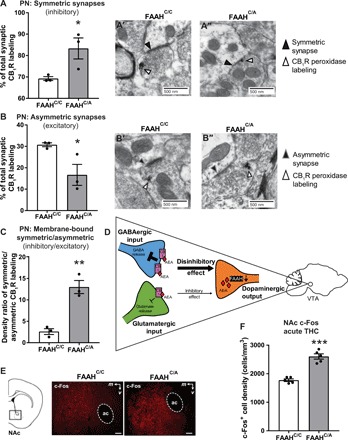Fig. 2. Adolescent female mice carrying the FAAH SNP demonstrate increased CB1R-labeled terminals forming symmetric synapses and decreased CB1R-labeled terminals forming asymmetric synapses in the paranigral subregion of the VTA.

(A) Adolescent female FAAHC/A mice (A″) have more CB1R-labeled terminals forming symmetric synapses compared to adolescent female FAAHC/C mice (A′) (unpaired t test, t4 = 2.819, P = 0.0479, N = 3 animals, n = 50 to 87 labels characterized per animal; FAAHC/A: N = 3 animals, n = 39 to 76 labels characterized per animal). (B) Adolescent female FAAHC/A mice (B″) have less CB1R-labeled terminals forming asymmetric synapses compared to adolescent female FAAHC/C mice (B′) (unpaired t test, t4 = 2.819, P = 0.0479; FAAHC/C: N = 3 animals, n = 50 to 87 labels characterized per animal; FAAHC/A: N = 3 animals, n = 39 to 76 labels characterized per animal). (C) Adolescent female FAAHC/A mice have a higher density ratio of membrane-bound CB1R on terminals forming symmetric synapses versus asymmetric synapses compared to adolescent female FAAHC/C mice (unpaired t test, t4 = 6.218, P = 0.0034; FAAHC/C: N = 3 animals, n = 50 to 87 labels characterized per animal; FAAHC/A: N = 3 animals, n = 39 to 76 labels characterized per animal). (D) Schematic of cell-specific CB1R action in the VTA. (E) Representative images of c-Fos immunoreactivity in the NAc of mice euthanized 90 min following acute THC. Scale bars, 120 μm. (F) Adolescent female FAAHC/A mice show increased c-Fos labeling in the NAc compared to adolescent female FAAHC/C mice (unpaired t test, t8 = 7.985, ***P < 0.001, n = 5 per group).
